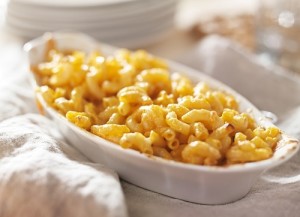Choosing Your Cheese

Few foods inspire as much love as cheese. In 2015, the U.S. Department of Agriculture estimated that Americans consumed over 5 million tons of cheese.On a smaller scale, almost everyone has a favorite variety, and a particular type of cheese can bring back fond memories of home, family and cultural traditions.
An important part of learning to cook, however, is expanding your horizons. By learning more about various cheeses and their culinary uses, you will open up endless possibilities for your cooking. Here are some of the more popular dairy products and tips on how to incorporate them into your own dishes:
Cheddar
Cheddar differs from other types of cheese because it goes through a process called, appropriately enough, cheddaring. The Kitchn explained that cheesemakers form curds into slabs, piling them up and repeatedly flipping them. The slabs grow denser and release whey through this process. Then the curds go through a mill to be reduced in size once more and pressed into molds.
The flavor becomes sharper and tangier over time, so the age of cheddars makes a huge difference in their tastes and cooking properties. Cheesemakers age mild cheddars for two or three months, sharp for six to nine months and extra-sharp for 18 months to two years.
Cheddar is a highly versatile cheese, but make sure you choose the right age for a particular application. Mild or sharp cheddar melts easiest, so they are ideal if you are making an omelet, macaroni and cheese or grilled cheese sandwiches. Aged cheddar is better for sprinkling atop a dish to add tangy flavor, much like you would use Parmesan.
Swiss
Nutty and sweet, Swiss cheese is an American version of the traditional Emmenthal cheese, often readily identified by its holes. The New Yorker discussed the origin of both the flavor and appearance as consequences of the historical cheesemaking process. Swiss cheesemakers created larger rounds to minimize the taxes they paid based on the number sold. In turn, their particular tools, presses and high cooking temperatures allowed the growth of the carbon dioxide-producing bacteria that give Swiss cheese its distinctive features.
Swiss cheese makes a fantastic addition to sandwiches, whether with turkey or corned beef, sauerkraut and Thousand Island dressing in a classic Reuben. It can also be delicious when melted into an omelet or frittata.
Goat
Also called chevre, goat cheese is creamy and tangy, adding complex flavor and a touch of sophistication to many dishes. Likely the most familiar variety is the aged French log, which is coated in an edible ash to prevent it from drying out. The aging process lasts several weeks, allowing molds to break down the cheese’s fats and proteins. This results in a softer texture and flavorful aromatics.
However, as Real Simple pointed out, there are more types of cheese made from goat’s milk than many people realize. Goat cheese may come in tomme style, as a wheel. It can also be made into blue, brie, cheddar or gouda.
Goat cheese is perfect in salad with beets and walnuts, atop a potato or with eggs. Try experimenting with more unconventional contexts as well, substituting goat cheese in classic recipes like macaroni and cheese or cheesecake.
Feta
Feta is a briny, soft white cheese made from sheep’s milk, usually blended with some goat’s milk as well, that originates in Greece. In fact, as The Daily Mail reported in 2005, the European Court of Justice ruled that only Greek-made cheese could be labeled feta in the European Union.
Feta is usually aged between two months and a year, and the longer the aging process, the brinier it tastes. This crumbly cheese goes well with lamb, in pasta or with vegetables like zucchini or broccoli.
Blue
The category of blue cheese actually includes many varieties, all of which draw their distinctive coloration and smell from spores of the mold penicillium . As Bon Appetit illustrated, the resulting cheeses may range from crumbly to creamy and from mellow in flavor to tangy and powerful.
Keep these differences in mind when selecting a blue cheese. A crumbly and mild variety like Roquefort or Saint Agur makes a good dressing, but the creamy Gorgonzola can produce a dip with a more pronounced flavor. Stilton is for the enthusiasts who appreciate its strong, lingering flavor with celery or in a vegetable soup.
Online Culinary School Planner & Checklist
Online Culinary School Planner & Checklist
Find out what a culinary education can do for you.

What might a career in the culinary or pastry arts look like for you? Online culinary school is a fast, affordable way to launch a career in the culinary or pastry arts. Get the workbook to see how it could help you.








Recent Comments